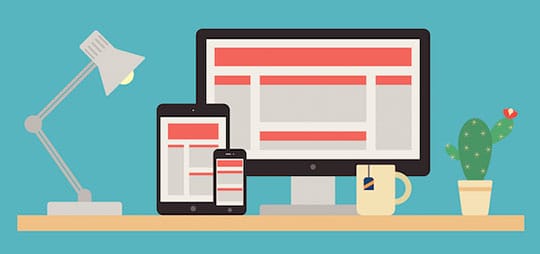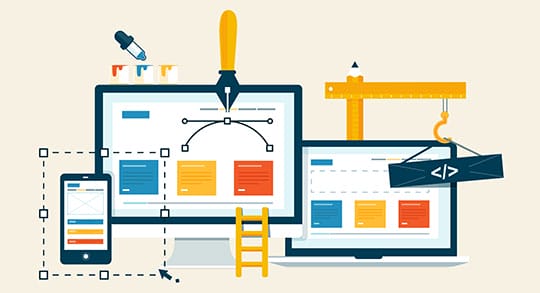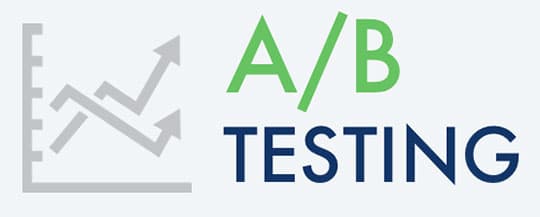One of the biggest goals you have in building a website is getting people to that website. Otherwise, why bother having it in the first place? Unfortunately, a solid, steady stream of traffic isn’t enough to make those visitors valuable or your website profitable. You already have some means of making money whether that’s selling products, showing ads, or converting users for potential sales. But to make use of any of them, you need to keep your users onsite for as long as possible. And your first step is to “hook” your users immediately, the second they get to your site.
Why the Hook Is Important

The internal content of your site will play a huge role in how your customers respond to your brand and make purchases. But the initial “hook” is even more important. According to a study by Microsoft, human attention span now hovers around eight seconds. That means, if you don’t somehow captivate your audience’s interest in the first eight seconds of their visit to your page, you could lose that visitor forever.
Hook-Worthy Features

So how do you go about giving your website a “hook”? There are five features that can do the job fairly easily:
1. Free stuff.
 People love free stuff, and the psychology here is obvious. When your homepage announces that you’re about to give something away for free, people instantly become more invested. Suddenly, there’s a reason they’re here, and clicking away has a cost associated with it. Once you make the promise, you have some wiggle room to explain the details and coax your users further into the site. But the initial offer is a must. Take a look at Netflix’s home page (if you aren’t logged in) as a great example. There’s a brief set of taglines, then a giant button to start your free month of movies. It’s simple and hooks new users instantly.
People love free stuff, and the psychology here is obvious. When your homepage announces that you’re about to give something away for free, people instantly become more invested. Suddenly, there’s a reason they’re here, and clicking away has a cost associated with it. Once you make the promise, you have some wiggle room to explain the details and coax your users further into the site. But the initial offer is a must. Take a look at Netflix’s home page (if you aren’t logged in) as a great example. There’s a brief set of taglines, then a giant button to start your free month of movies. It’s simple and hooks new users instantly.
2. Personalized information.
 As you’ll see in several of these features, content is generally good. Offering content can be as good as offering “free stuff”—but only if your content is valuable. One way to make it valuable is to make it personalized in some way. Rather than speaking generally to the masses, you’ll provide a custom report for each individual who visits your page. For example, Green Residential offers a free property analysis based on a visitor’s address. Building a feature like this will take some extra development time and money. But it’s worth it to capture new interest.
As you’ll see in several of these features, content is generally good. Offering content can be as good as offering “free stuff”—but only if your content is valuable. One way to make it valuable is to make it personalized in some way. Rather than speaking generally to the masses, you’ll provide a custom report for each individual who visits your page. For example, Green Residential offers a free property analysis based on a visitor’s address. Building a feature like this will take some extra development time and money. But it’s worth it to capture new interest.
3. Concise video content.
 Another form of content that can capture immediate interest is a video that concisely and effectively seizes user attention. There are a few ways to implement this. For starters, you could use an explainer video to tell customers, in a minute or two, exactly what your brand is and why you can make their lives better. You could also go to the Nike Jordan M6 website and offer an aesthetically pleasing background video to complement the rest of your homepage design. The movement immediately sparks interest, and the dynamic imagery keeps it.
Another form of content that can capture immediate interest is a video that concisely and effectively seizes user attention. There are a few ways to implement this. For starters, you could use an explainer video to tell customers, in a minute or two, exactly what your brand is and why you can make their lives better. You could also go to the Nike Jordan M6 website and offer an aesthetically pleasing background video to complement the rest of your homepage design. The movement immediately sparks interest, and the dynamic imagery keeps it.
4. Reviews and testimonials.
 People relate to other people more than they ever relate to brands. That’s why including some personal reviews and testimonials on your homepage can be powerful. If you can, include actual headshots of the people writing those reviews and testimonials to encourage a more personal connection—like how Buffer displays its community members. This will not only grab and keep your users’ attention, but it will also help them build more trust in you.
People relate to other people more than they ever relate to brands. That’s why including some personal reviews and testimonials on your homepage can be powerful. If you can, include actual headshots of the people writing those reviews and testimonials to encourage a more personal connection—like how Buffer displays its community members. This will not only grab and keep your users’ attention, but it will also help them build more trust in you.
5. Unique design elements.
 This last feature is vague and open-ended and for a reason. Including unique design elements, that none of your competitors use, and that can’t be found with basic template sites, is a great way to hook your users straightaway. Giving them something they don’t expect will pique their interest, and even if it’s only for a moment, it will buy you some more time to explain who you are and what you can do. The sky’s the limit here, so think creatively and focus on what would make for an ideal user experience.
This last feature is vague and open-ended and for a reason. Including unique design elements, that none of your competitors use, and that can’t be found with basic template sites, is a great way to hook your users straightaway. Giving them something they don’t expect will pique their interest, and even if it’s only for a moment, it will buy you some more time to explain who you are and what you can do. The sky’s the limit here, so think creatively and focus on what would make for an ideal user experience.
Refining Your Approach

These five features all have the potential to hook your audience, but none of them is a guarantee. Every brand has a different audience, with different values and needs, and it will take time for you to find the right combination of features with the right combination of twists to appeal to them. Your best bet is to experiment with multiple variations, using A/B testing as a primary format, and gradually work out what tactics result in the most time spent on page. If you need further inspiration, take a look at some of your competitors’ sites, and think carefully about what makes your brand unique in the first place.





